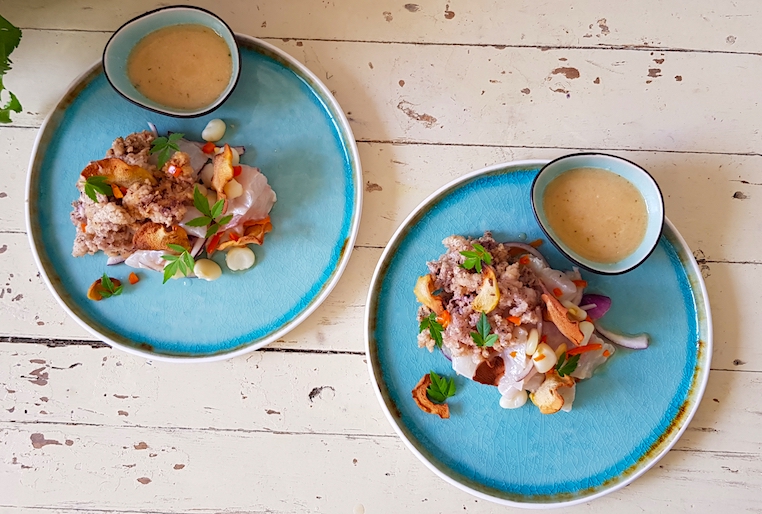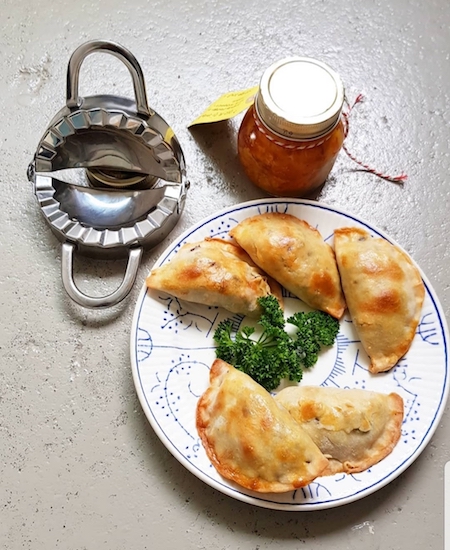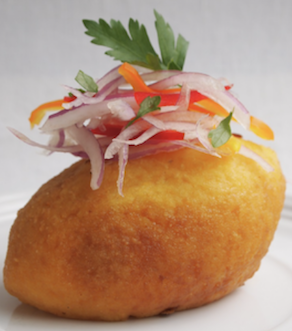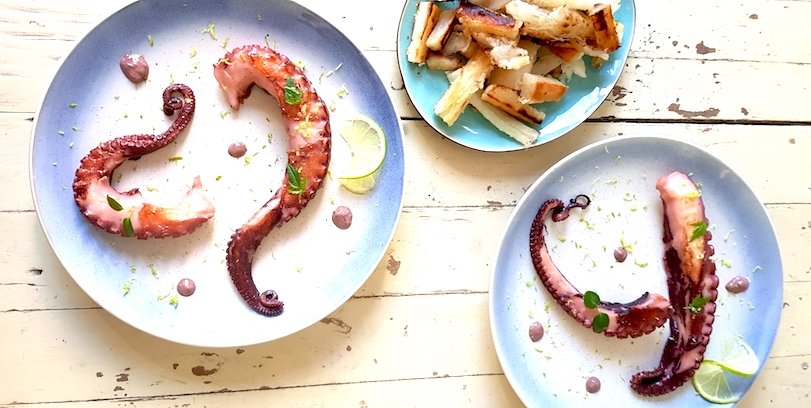About dishes
There are so many beautiful stories of dishes emerged in times of war, poverty, fusion or just creativity. Here I intend to build a library of these wonderful stories.
There are so many beautiful stories of dishes emerged in times of war, poverty, fusion or just creativity. Here I intend to build a library of these wonderful stories.
This 'satay skewers' are traditionally made of beef-heart, marinated in vinegar and spices and cooked over flames . Back in the days dismissed by the Spanish Conquistadores as inferior food for the slaves. Nowadays a delicacy for everyone. When the slaves moved to Lima, in the evening the wives went out to sell the on charcoal grilled marinated skewers. The marinade existed of herbs and ingredients they could find. Nowadays the beef heart also can be replaced by squid, chicken or fresh cheese.

During the Salpeter War in 1879, the Peruvian army had trouble getting food 😯 So the Peruvian Mums collected potatoes and other ingredients and created a meal they offered to their soldier sons “for the cause” of defending their territory...and la causa was born. Causa Limeña is a little pie with yellow potato with ají amarillo, avocado, chicken with mayonaise and cilantro. The chicken also can be replaced by tune, squid or beetroot. See there recipe here!

With the economical crisis in the 80s and 90s, street vendors started selling this ceviche from wheelbarrows, "carretilla's". The ceviche was made with fish of an affordable price, so the ceviches could be sold for a reasonable price. The carretillero became very popular and although you nowadays also can eat the ceviche in restaurants, it kept its name. This dish distinguishes itself from the ceviche clásico as it besides fish has "chicharrón", fried squid, and the tiger's milk always contains ginger, celery and garlic. The great thing is that the street vendors prepare it quick and dirty while you are waiting. See the recipe here.

Before independence from Spain, empanadas already were very popular. The Inca king even would perform as judge in empanada contests. Contestants came from bakeries, pastry shops, and cloistered convents to Lima to compete to with the prize for the best empanada. These empanada challenges were held around the feasts of Christmas. During the decade of the nineties empanadas became very popular. People began to sell them from baskets and carts in the streets.
Nowadays, the empanada has become more sophisticated, thanks to the imagination of our great chefs. They set the trend of filling empanadas with the best Peruvian dishes, such as duck seco, rice with chicken, pork adobo, aji de gallina, sangresita, chicharrón, anticuchos, and many more. See the recipe for a lovely empanada with filling of papa rellena.

There are several stories about the origin of Papa a la Huancaína, of which the following are the most well-known: during the construction of Peru's Central Railroad from Lima to Huancayo, this was the food for the rail workers. Boiled potatoes were served with a delicious cheese, pepper and milk sauce. Another story explains that the plate was sold to passengers at the railway stations between Lima and Huancayo. From that came the name “potatoes that you eat en route to Huancayo” which later became "Papa a la Huancaína". One thing we do know: the birth of this plate was in the 19th century. See my recipe here!

During the Salpeter War in 1879, the soldiers needed to march long distances and they had to carry pre-made food. As there was no easy way to preserve it, they would cook beef wrapped in dough of cooked potatoes which they then fried. The fried stuffed potatoes they wrapped in stretches of cloth and when mealtime arrived they just pulled back the wraps and ate the stuffed potatoes. The filling nowadays exists of minced beef, egg, raisins, olives, onion and parsley.

This dish was born in 1987 when a guest of a Peruvian-Japanese restaurant in Lima one night ate at the restaurant. The guest told the owner that he had tried an octopus dish with a lead coloured sauce and he was curious whether she knew the dish. She didn't,, but was curious enough to start experimenting and she came up with a new signature dish: pulpo al olivo, which is an octopus dish with an olive based 'lead coloured' sauce. See the full recipe in my youtube video's.

This dessert was born in the 19th century. The wife of a poet invented the recipe and called the dessert 'the sigh of a lady from Lima' because it is super sweet and light. It is made of dulche de leche, merengue with egg yolk, white port and cinnamon. .
